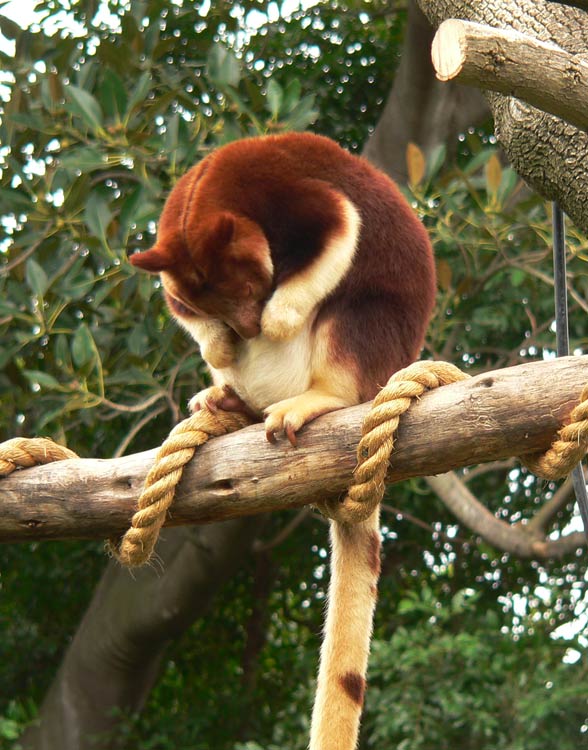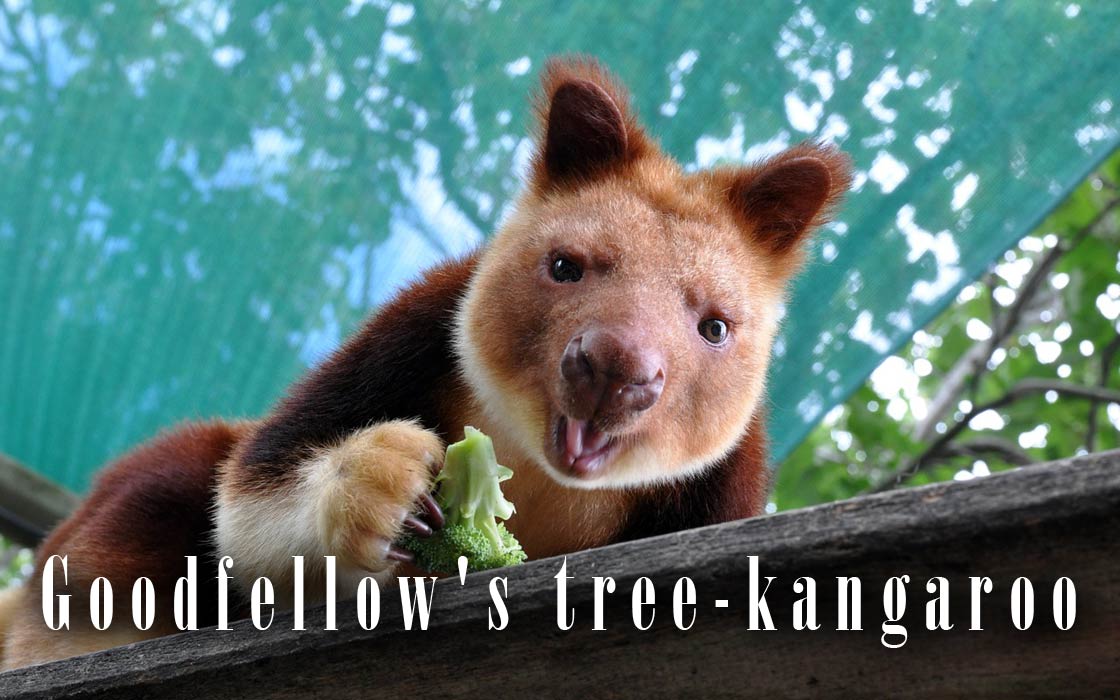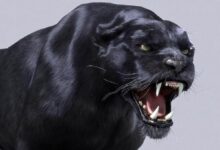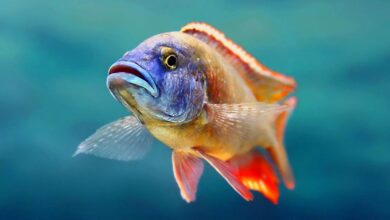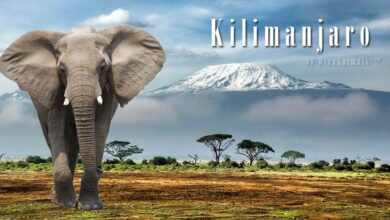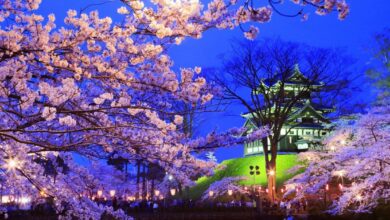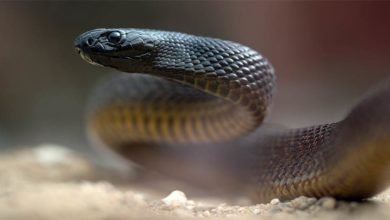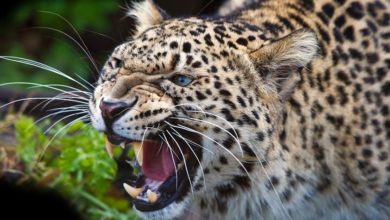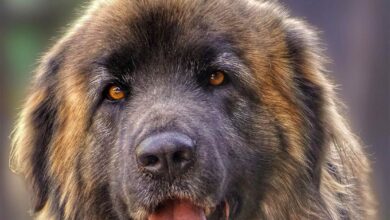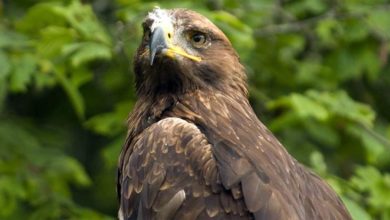Goodfellow’s tree-kangaroo
The ornate tree-kangaroo (Dendrolagus goodfellowi)
Hearing the name of this animal for the first time, you can imagine an unknown species of monkey or bird. When we see the photos, we understand how wrong we were. Who among you knew that behind this exotic name is hidden… a kangaroo that climbs trees?
Classification
- Kingdom: Animalia
- Phylum: Chordata
- Class: Mammalia
- Infraclass: Marsupialia
- Order: Diprotodontia
- Family: Macropodidae
- Genus: Dendrolagus
- Species: Dendrolagus goodfellowi
- Subspecies:
- Dendrolagus goodfellowi goodfellowi
- Buergers’ tree-kangaroo (Dendrolagus goodfellowi buergersi)
- Names: Goodfellow’s tree-kangaroo, ornate tree-kangaroo

Name
The name of this tree-kangaroo is derived from Walter Goodfellow – the British zoologist, the ornithologist and the collector from the 19th century.
Distribution
This mammal lives in rain forests in New Guinea, and the border of its range is in the central part of Irian Jaya province in Indonesia. It lives only in dense tropical forests up to 3000 m (9840 ft) above sea level.. Its habitat is created in the treetops in enclosed forest areas.
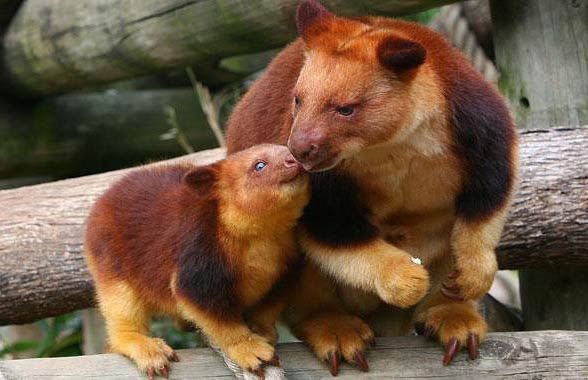
Characteristics
Appearance
Although it is a very close relative of ground kangaroos, it is clearly different in appearance because it has adapted to an arboreal lifestyle: hind legs are shorter, but strong and massive. The forelegs are proportionally longer than those of ground-based cousins are, they are also distinguished by strength, endurance and high mobility.
The long tail helps maintain balance when jumping from branch to branch. The feet are wide, equipped with soft pads and curved, long, sharp claws necessary for climbing trees.
The whole silhouette is very slim, overgrown with short woolly fur flickering with the shades of the maroon-brown to the crimson. Its jowls, chest, belly and the underside of the tail are in the shade of beige, its mouth is grayish-brown and its cheeks and legs are yellow or golden.
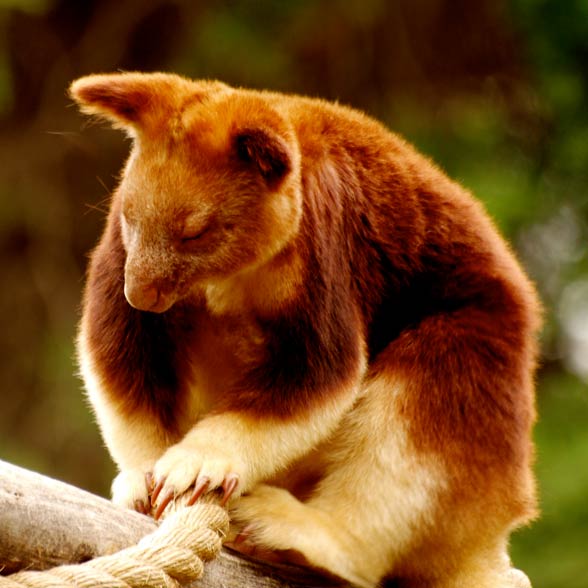
There are two characteristic golden patches, which are placed along the spine, while on the tail each individual has a unique pattern created from yellow-gold rings and spots. Lower legs can move independently of each other, which is impossible for earthbound kangaroos.
Females have got pouches equipped with four teats, to which young are moving.
Sexual dimorphism is rather little – males are slightly larger than females. The tree-kangaroo does not have opposing thumbs. It moves in a very clumsy way on the ground paying attention to every step it takes. The body leans forward to find the balance point with its heavy tail.
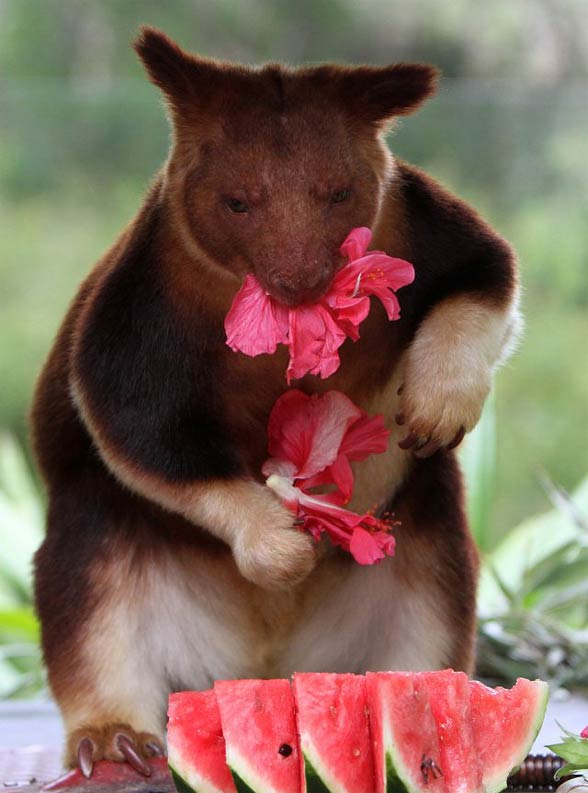
Diet
It eats mainly leaves from the tree of Flindersia pimenteliana type. Apart from this delicacy, it often tastes of fruits, cereals, flowers and grass. It has a large stomach in which the food is fermented, similar to cows and other herbivorous animals.
Thanks to this process, the food is softened in one part of the stomach and then, it goes back to the tree-kangaroo’s mouth, which chews it again and directs it to the second stomach chamber. In each stomach chamber, there are other bacteria that soften hard to digest leaves and grasses. Apart from plants, it also eats eggs and insects.
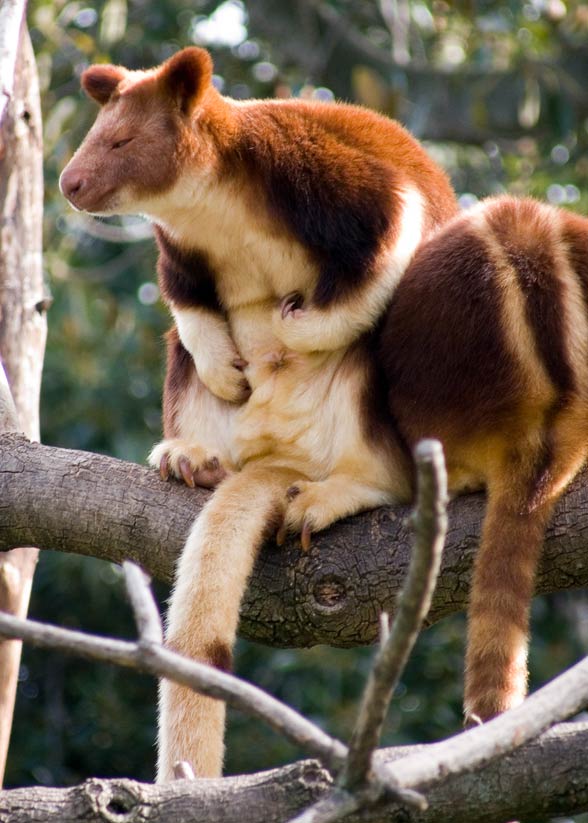
Behavior
On the ground, it moves slowly and, moving its legs alternately, quite differently than ground kangaroos do. When the tree-kangaroo is on the ground, it cannot jump very well but the situation changes when it is on the tree. It feels like a fish in water when it stays in the treetops – it is agile and fearless. It climbs holding its arms around the tree trunk and it jumps bouncing with its strong hind legs. In “fly” the balance is caught by the long tail, like the snow leopard.
It leads rather a daily lifestyle; it is most active in the morning and in the afternoon, but individuals living near human settlements prefer night activities. Both males and females are territorial, but males occupy larger areas with territories of several females. It has been observed that the tree-kangaroo is lonely for the majority of the year.
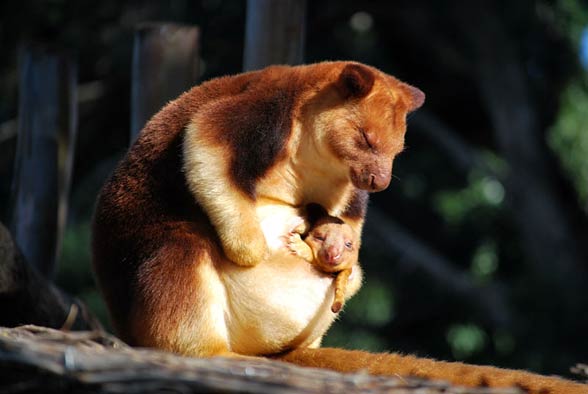
Reproduction
Because the animal belongs to the marsupials, females have well-developed pouches on the belly. Pregnancy lasts 21 – 38 days; a few hours before the delivery, the female sits on the shaft of the tail and its remaining part hangs between the legs. The mother licks the “path” from the birth canal to the pouch so as the newly born cub could get there.
A newborn baby has the size of bean seeds and it is very delicate so even the mother cannot help it with its first important journey which is so important for the rest of its life. The young is blind and bald, but instinctively it goes to the pouch where it sucks to one of four teats. In the new place, it grows for the next 8-10 months. The young becomes completely independent after 11-13 months, while sexual maturity reaches about 2 years of age.
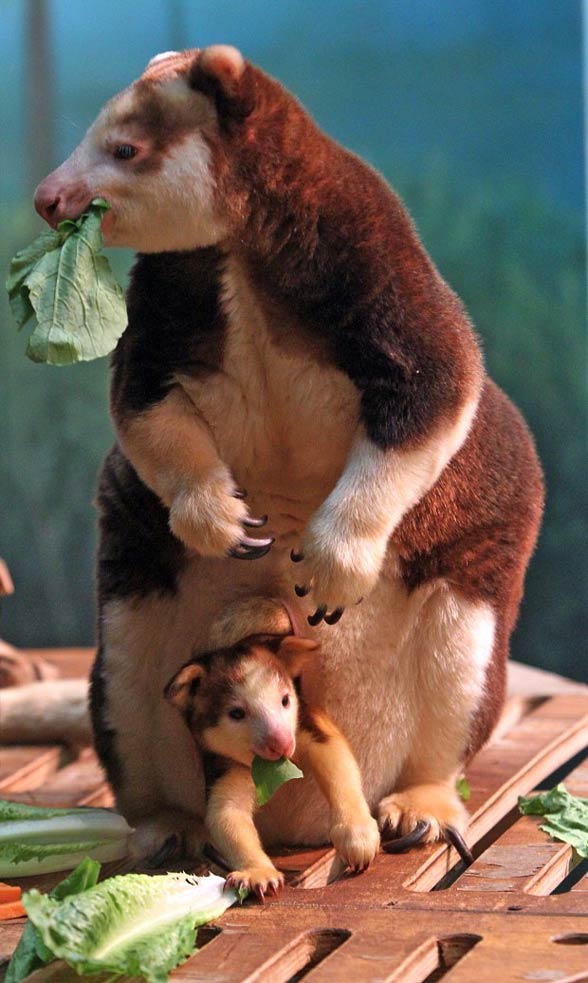
Detailed information / size
Goodfellow’s tree-kangaroo (Dendrolagus goodfellowi)
- Length:
- Males: 55 – 78 cm (22 – 31 in)
- Females: 58 cm (23 in)
- Tail’s length:
- Males: on average 84,5 cm (33 in)
- Females: on average 68 cm (27 in)
- Weight: 5,9 – 9,5 kg (13 – 21 lb)
- Males: on average 7,5 kg (16.6 lb)
- Females: on average 7,4 kg (16.3 lb)
- Lifespan: over 14 years (in captivity on average 23,6 years)
- Length of pregnancy: 21 – 38 days
- Time spent by young in the pouch: 9 to 12 months
- Number of young: 1
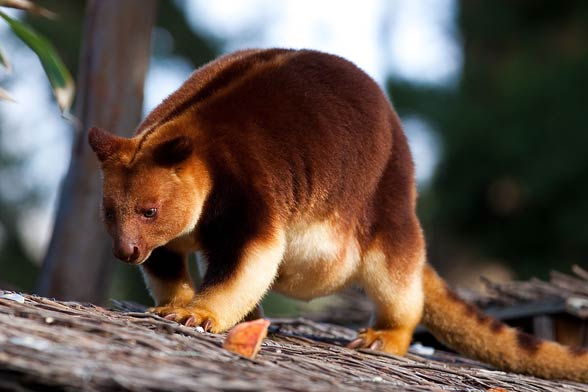
Goodfellow’s tree-kangaroo – curiosities
- The tree-kangaroo jumps very well – it can jump from branch to branch at a height of 9 m (30 ft) without any injury.
- It is endangered because of destroying its habitat, where agricultural and mining areas are created. In the past, it was hunted for meat. At present, although it is protected, it is the victim of poachers.
- Apart from the human being, its natural enemy is the dingo (Canis dingo).
- Apart from Goodfellow’s tree-kangaroo, there are 11 other tree-kangaroo species in the world.
- There is no strict reproductive period, which is caused by irregularly changing environment conditions in its habitat.
